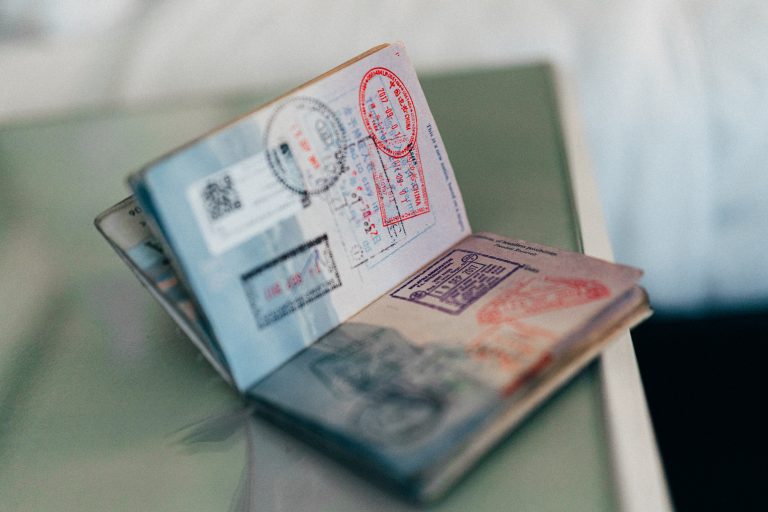Immigration Visas (Explained)

There are two types of visa categories in the United States:
1. Nonimmigrant Visas
2. Immigrant Visas
The United States Immigration and Visa System can be a complex issue and sometimes hard to understand. On this page we will explain the differences between various immigration visas available.
Depending on the purpose of your visit, you as a person will either be classified as an immigrant or nonimmigrant. For example, a person visiting the United States on holiday is a nonimmigrant, but a child being adopted will arrive the United States on an immigrant visa. The important difference between the two visas are related to the intention for visiting the Unites States; nonimmigrant visas are intended for Temporary Visits and immigrant visas are for individuals relocating permanently to the United States.
Types of United States Visas
Within each of the two visa classifications, there are many different types of visas available.
“Nonimmigrant” Immigration Visas:
- B-1 Temporary visitor for Business
- B-2 Temporary visitor for Pleasure (Tourist Visa)
- E-1 Treaty Trader, spouse and children
- E-2 Treaty Investor, spouse and children
- F-1 Student Visa
- H-1B Work Visa for Specialty Occupations (including fashion models)
- J-1 Visas for exchange visitors
- K-1 Fiancée and Fiancé Immigration Visa
- O-1 Extraordinary ability in Sciences, Arts, Education, Business, or Athletics
- P-1 Individual or team athletes
- R-1 Religious workers
- TN Trade visas for Citizens of Canada and Mexico
Note: Citizens for certain countries do not need an immigration visa at all. This program is called Visa Waiver. It enables foreign nationals, mostly from developed countries, to visit the United States for up to 90-day visa-free.
Immigrant Visas:
- Immediate Relatives Immigration Visa
- Special Immigrants
- Family-sponsored Immigration Visa
- Employer-sponsored Immigration Visa
- Marriage to a Foreign National
- Diversity Immigrant Visa Program, commonly know as the Green Card Lottery
- Employment Immigrant Visas
Where to Get an Immigration Visa
Visas are always issued abroad at a U.S. Consulate or Embassy. It is not possible to get a visa once in the United States. The visa application process consists of different application forms and immigration fees that must be paid. Citizens with an electronic passport from a country that participates in the Visa Waiver Program do not need to obtain a visa in advance for temporary visits. However, citizens of countries that are required to obtain a visa in advance must do so in order to be allowed entry into the United States. Many U.S. embassies and consulates now also require an appointment to be made in advance. It is recommended to schedule your appointment early as there may several weeks of waiting.
Will there always be an Immigrant Visa Available?
Certain immigrant visas have numerical limits. This there will be no more visas available until the following year once the quota is reached. The Diversity Visa Program (a.k.a. Green Card Lottery) always reaches the quota. The same does the H-1B visas for skilled professionals. However, most family-based visa, such as immigrant visa for spouses of United States citizens..
Will an Immigrant Visa Guarantee Entry in the United States?
No. An immigrant visa is not guaranteeing you an entry to the United States. Upon entry you will be asked questions by an immigration officer from the Department of Homeland Security. He or she will inspect your documents and immigration visa. Any irregularity with the immigration visa or supporting documents may lead to denial of entry and Deportation.
What Happens if I Overstay My Visa?
Do not overstay your immigration visa! All visas have an expiry date. However, note that the time you are authorized to stay in the United States may be different from the expiry date on your visa. For example, a B-2 Tourist Visa may be valid for up to 10 years. However, upon entry to the United States you will only be allowed to stay for up to 6 months. You visa will still be valid, but the authorized time you are allowed to stay is limited. The advantage is that if you want to enter the U.S. the following year (assuming your visa is still valid), you do not have to apply for a visa again before entering the United States. Note that your passport must also be valid for at least 6 months upon entry to the United States.
Are you traveling the United States to visit your relatives, friends or simply for vacation? Contact our immigration attorneys to see how we can help.




